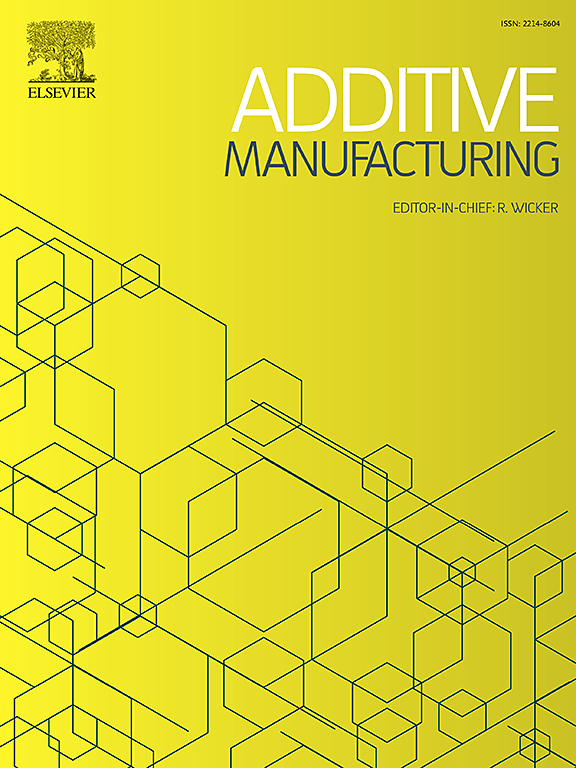Efficient energy-dissipative bioinspired architectured composite materials with high mechanical properties
IF 11.1
1区 工程技术
Q1 ENGINEERING, MANUFACTURING
引用次数: 0
Abstract
Additive manufacturing of stiff and strong architectured composite materials enables to replicate the intricate architectures found in biological systems while providing excellent mechanical performance, paving the way for efficient energy dissipative systems. By abstracting different Bouligand architectures found in various marine creatures, the innovative concept of pseudo-orthogonal Bouligand architectured laminates (POB) is introduced to address the requirements of energy dissipation. POB are also coupled with the introduction of functional voids, which geometry and content are inspired by the pore canals present in the exocuticle and endocuticle of the lobster shell. The different architectured laminates are 3D-printed with PolyAmide 12 (PA12) reinforced by continuous basalt fibre. Novel POBs concepts are tested under non-perforating low-velocity impact at 9.4 m.s−1 and an impact energy of 50 J, along with more conventional stacking sequences to allow for comparison. All the tested samples dissipate at least 73 % of the impact energy, with porous POBs demonstrating the highest efficiency, ranging from 90 % to 95 %. This represents an improvement of up to 10 % compared to their denser counterparts, while also being 30 % lighter. The resulting performance in terms of energy dissipation capacity is then attributed to the underlying damage mechanisms imparted by the architecture, highlighting the desirable behaviour of porous structures.
具有高机械性能的高效耗能仿生建筑复合材料
增材制造坚硬而坚固的结构复合材料能够复制生物系统中发现的复杂结构,同时提供出色的机械性能,为高效耗能系统铺平道路。通过抽象各种海洋生物的不同Bouligand结构,引入伪正交Bouligand结构层压板(POB)的创新概念来解决能量耗散的要求。POB还引入了功能性空隙,其几何形状和内容的灵感来自于龙虾壳的外表皮和内膜中的孔道。不同结构的层压板是用连续玄武岩纤维增强的聚酰胺12 (PA12) 3d打印的。新型pob概念在9.4 m的非射孔低速冲击下进行了测试。s−1和50 J的冲击能,以及更传统的堆叠顺序,以便进行比较。所有测试样品至少耗散73 %的冲击能量,多孔pob显示出最高的效率,范围从90 %到95 %。与密度更高的同类产品相比,这代表了高达10 %的改进,同时也减轻了30 %。由此产生的能量耗散能力性能归因于结构所赋予的潜在损伤机制,突出了多孔结构的理想行为。
本文章由计算机程序翻译,如有差异,请以英文原文为准。
求助全文
约1分钟内获得全文
求助全文
来源期刊

Additive manufacturing
Materials Science-General Materials Science
CiteScore
19.80
自引率
12.70%
发文量
648
审稿时长
35 days
期刊介绍:
Additive Manufacturing stands as a peer-reviewed journal dedicated to delivering high-quality research papers and reviews in the field of additive manufacturing, serving both academia and industry leaders. The journal's objective is to recognize the innovative essence of additive manufacturing and its diverse applications, providing a comprehensive overview of current developments and future prospects.
The transformative potential of additive manufacturing technologies in product design and manufacturing is poised to disrupt traditional approaches. In response to this paradigm shift, a distinctive and comprehensive publication outlet was essential. Additive Manufacturing fulfills this need, offering a platform for engineers, materials scientists, and practitioners across academia and various industries to document and share innovations in these evolving technologies.
 求助内容:
求助内容: 应助结果提醒方式:
应助结果提醒方式:


